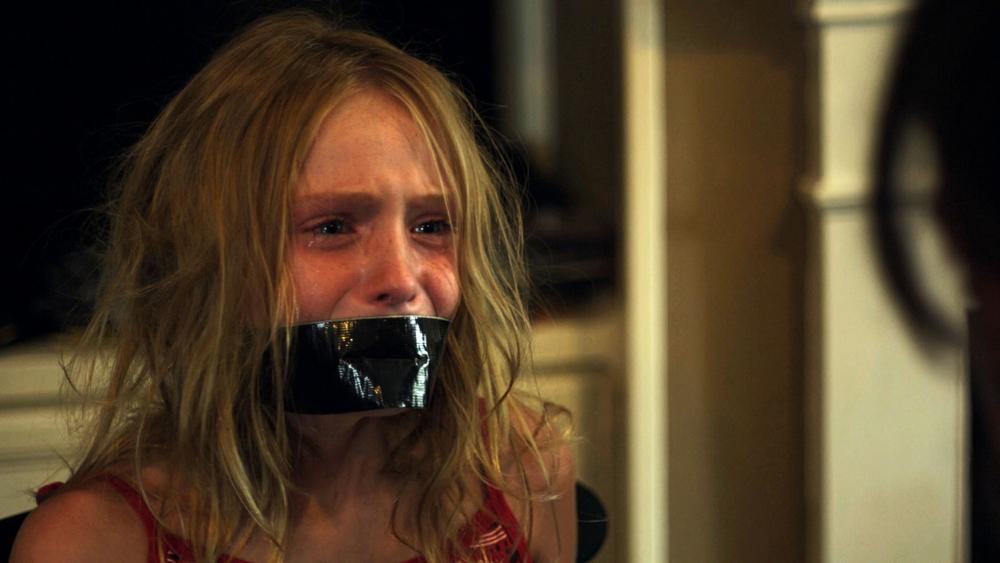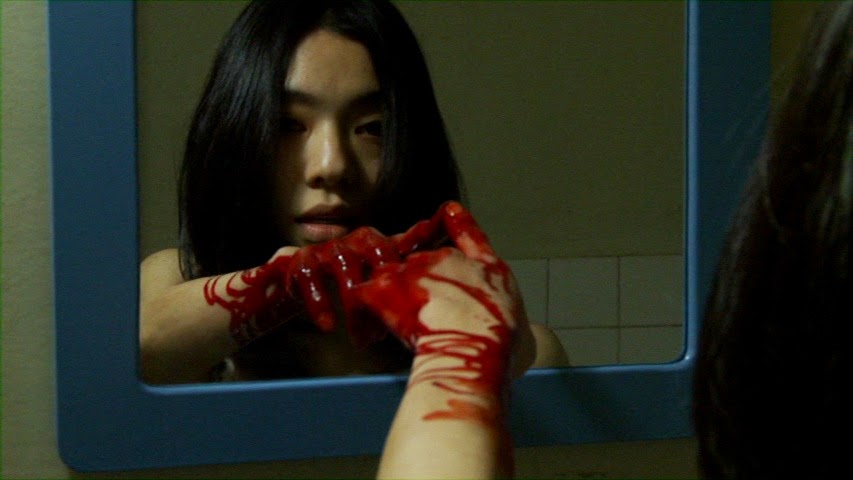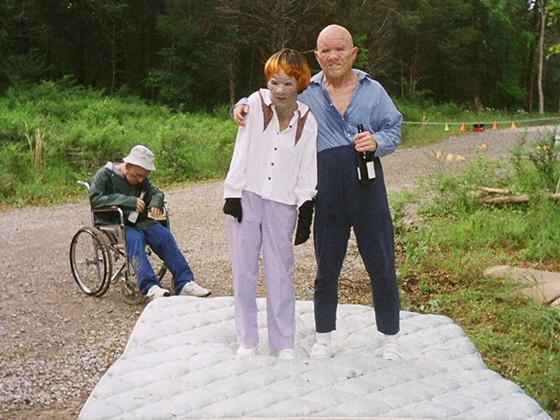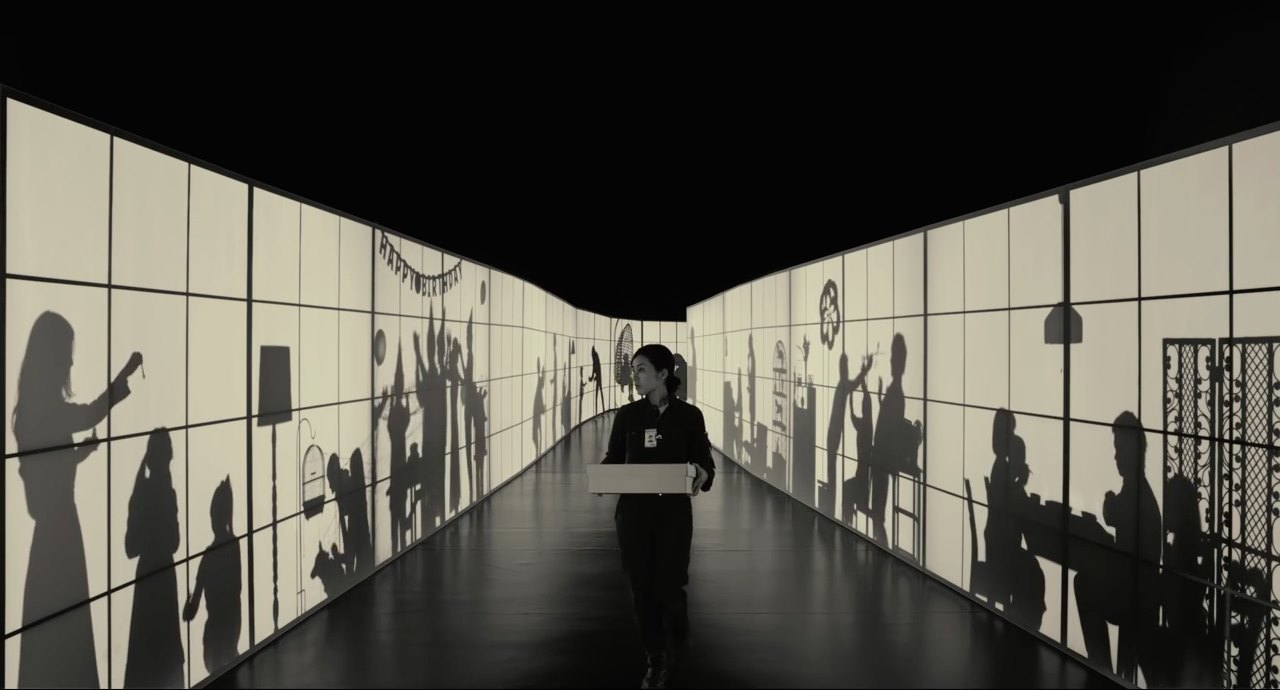5. Red White & Blue (Rumley, US, 2010)
IMDb Rating: 6.4

Many fans of English director Simon Rumley would dispute that his 2006 film The Living and the Dead deserves way more praise than it received. It’s an intriguing little film, but likely left many viewers underwhelmed, which is something that one of his later films, Red White & Blue, is incapable of doing. Extreme cinema often demands a strong reaction, leaving some feeling rather sick and others utterly captivated, and Rumley’s finest achievement certainly fits this bill.
Nate (in a jaw-dropping turn from Noah Taylor) is a former army interrogator whose attention is averted to the tragic life of Erica (Amanda Fuller); withdrawn from society in her self-destructive quest for sexual satisfaction, Nate wishes to save her from a life of hard-drinking and meaningless one-night stands, wishing that they both may finally experience human connection.
What follows is an unspeakably brutal revenge-thriller so violent in it’s depiction of a man at the end of his tether, that it evidently estranged viewers as Nate’s torturous methods became more and more grotesque.
Rumley’s decision to shift perspectives as the narrative progresses results in every heated exchange and infliction of harm to possess more than the sadistic thrills commonplace in films of this kind.
Every character has motive, inner-demons, and are battling with regret, which make this a moving low-budget tale of loss, which is capable of ratcheting up the tension at any given moment to make the audience squirm at every act of bodily misfortune. This isn’t a pleasant experience, however, it will certainly leave patient and brave audiences with the knowledge that they’ve witnessed something special.
4. Kotoko (Tsukamoto, Japan, 2011)
IMDb Rating: 6.7

Those familiar with the work of legendary Japanese filmmaker Shin’ya Tsukamoto (Tetsuo: The Iron Man, Tokyo Fist) will be aware that he is truly one of a kind. He is perhaps best know for the other-worldly presentations of Japanese dystopia found in the Tetsuo series, and films like A Snake of June.
Yet, a poignant and sensitive side has always been there in his less resounded works, such as the often overlooked Vital. He returns to explore themes of human fragility with the heart-wrenching Kotoko, which was awarded the Orizzonti prize at the 68th Venice Film Festival; the first Japanese film to earn this honour.
Kotoko is a single-mother whose responsibility for her young son is thrown into question when she begins to suffer from double-vision and monstrous hallucinations. As this continues, Kotoko begins to further question the legitimacy of what she is seeing, which threatens to destroy her sanity entirely. Tsukamoto’s fearless direction, along with Cocco’s titular performance, make this an often unbearably harrowing ordeal, but one bursting with beauty and emotional truth.
The duty of caring for a child when one is caught in the cruel grip of anxiety and self-doubt is a resonant story to tell, and when the brain begins to lie to itself, there is sadly no one left to trust. Witnessing these nightmarish perceptions from the eyes of our strong and persecuted protagonist is touching and agonising in equal measure, and although leaving viewer’s broken, clearly left others feeling indifferent and exhausted. Yet, up until the final haunting frame, the film remains urgently challenging, and may very well be Tsukamoto’s crowning achievement.
3. Trash Humpers (Korine, US, 2009)
IMDb Rating: 5.0

It is never surprising when a Harmony Korine picture fails to attract the praise it deserves, and when Trash Humpers was released in 2009 – only to be met with harsh criticism and apathy – it was almost expected. That’s because Korine’s experimental exploration into the seedy dark-heart of peripheral and deviant sub-cultures is less a film than it is a compelling document of the co-existence of the suburban and the deranged.
It must be said that this is the director’s least accessible film to date. Shot on VHS, the filmmaker didn’t even intend to release this as a film. His intentions were to leave VHS copies of the film scattered around, in the hopes that people would take them home and play them.
Due to copyright issues, this was impossible, and we’re thankful for it, because the very concept of finding an unmarked video tape and witnessing Trash Humpers is nothing short of horrifying, and that’s because it draws attention to an unsettling reality taking place just shy of our eyeline. The film is shot by the participants themselves; a bunch of people crudely disguised as the elderly who encounter a selection of Nashville, Tennessee’s most unnerving residents.
In the liner notes of the film’s UK release is a statement: “We will always be here lurking around and looking in windows and dancing in parking lots.” This is disturbing thought, but a timely one. The participants signify those living on the fringe of American society – an invisible underclass whose behaviour has taken on a horrifyingly distorted form, like a worn mask that cannot be taken off.
The lengths that Korine and his team go through to maintain a high-level of authenticity is staggering, and the power of the film remains in its close resemblance to reality. The people they meet often feel so real, and it becomes difficult to distinguish who is acting as the people they confront become more and more intolerant and genuine.
There is genius in the shooting methods, as often the group are depicted smashing things next to a busy road, or rather, next to civilisation. They are dancing, perhaps in celebration of their own existence, boasting that even in their freakish nature, they are allowed to survive in modern-day America, and that they are never too far away from those who cannot see them.
2. Heaven Knows What (The Safdie Brothers, US, 2014)
IMDB Rating: 6.6

Hailing from New York, the Safdie brothers are arguably the most exciting filmmakers to emerge from America in the last ten years. Although their first film together, Daddy Longlegs was a comedy-drama, they soon moved into darker territory with the release of their second collaborative effort: Heaven Knows What.
The film is based on Arielle Homes’ book, “Mad Love in New York City”, who stars in the lead role, presenting audiences with her account of heroin-addiction and toxic-romance at the bottom of the rung.
Although one could argue that this stunning piece of work feels like early Scorsese had directed Jerry Schatzberg’s The Panic in Needle Park, it is undoubtedly the work of bold and unique filmmakers. The duo went on to cement themselves as directors to keep an eye on with 2017’s breakneck crime-thriller Good Time, which elaborated on the style and skill they exhibited in their second effort, which is a disquieting personal portrait of someone who has experienced life at its lowest.
Holmes’ presence and dedication to telling her story clearly brought out the best of the surrounding cast, with every single character feeling shockingly tangible, particularly Caleb Landry Jones’ Ilya as Harley’s poisonous love-interest. The audience is closely positioned alongside Harley’s battle to overcome addiction every step of the way, and with the aid of a nerve-shredding score, the film is electrifying from the first frame up until the departing shot. The exposition is so crushingly realised that we are immediately invested in trying to accompany the protagonist on her difficult journey.
The savagery of the film’s introductory moments are indicative that Heaven Knows What is uninterested in attracting a wide audience, but it certainly deserves much more praise, and will likely be reevaluated by film-fans later in its lifespan.
1. The Whispering Star (Sono, Japan, 2015)
IMDB Rating: 6.2

Sion Sono’s science-fiction masterpiece ranks among the very best work of the decade, and sadly, so few people are yet to realise this. The cult Japanese director may be the greatest filmmaker currently working; if audiences weren’t convinced of this after viewing his four-hour magnum-opus Love Exposure, then his minimalist tale of remaining humanity may have been the film to sway them – regrettably, this just wasn’t the case.
The Whispering Star is the beloved filmmaker’s passion project, and has taken twenty years to fully realise. It is the film that adoring fans have been waiting forever to see, and it is safe to say that devotees were not disappointed, it’s simply a shame that more audiences couldn’t appreciate this remarkable piece of work.
The human population is now outnumbered by machines and AI in the wake of human mistakes, and humanity is scattered across the galaxy in disarray. Humanoid delivery woman Yoko Suzuki (Megumi Kagurazaka) travels through space to derelict planets, delivering remaining human beings with packages containing seemingly insignificant everyday objects. Her and the ship’s operating system are unsure as to the reasons for the sending of these packages – yet the ability to associate and attach memories to dull relics of society’s past is the only shred of humanity to remain after having to regrettably abandon their native home.
Shot in sophisticated black and white, the location of the actual nuclear power-plant meltdown – Fukushima – is inventively photographed, and with the cooperation of the city’s actual residents, provide the film with an unshakeable air of tragedy.
Perhaps the film’s greatest praise is that it feels reminiscent of the visual style of Russian filmmaker Andrei Tarkovsky (Andrei Rublev, Stalker) with Sono proving to share the great director’s thoughtful and meditative approach to science-fiction storytelling; with the theme of what it means to be human flowing through the great auteur’s body of work and Sono’s caring homage respectively. This is Sion Sono at his very best.
These ten films are all given high-praise in small circles, and hopefully this list will result in them receiving further praise.
Author Bio: Christopher Weston is Film & Journalism graduate with a passion for the Arts. He’s interested in film from around the globe, with a keen interest in the stranger side of cinema; achieving much joy writing about the things he loves and his experiences and interactions with the artistic exercises of others.